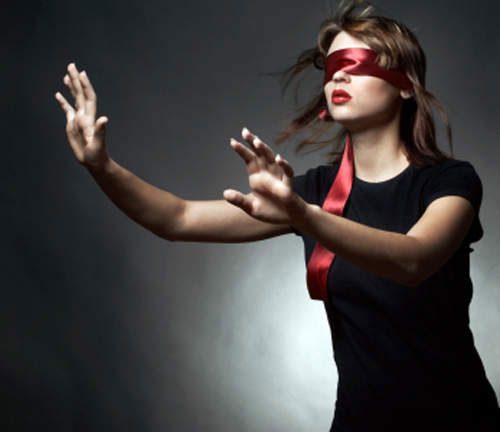The world of the visually impaired is not an endless dark void, and their dreams can be very “colorful”.
Visual impairment can occur due to congenital, physiological, or neurological factors. A visually impaired person is considered disabled and finds it very challenging to live and function like a normal person. Without the concept of images, colors, light, shapes, etc., what is the world of the visually impaired like?
What do visually impaired people “see”?
What a visually impaired person can perceive largely depends on their level of vision. A person who is completely blind cannot see anything. However, a partially sighted person can still perceive light and even colors and shapes, though not clearly.
People often assume that visually impaired individuals see the world entirely in black, similar to when we close our eyes. But the reality is far from that. A completely blind person’s eyes have no ability to perceive light or darkness, meaning they cannot see their surroundings, including the color black.
Especially for those who are congenitally blind, meaning they have never known color, they have nothing to compare. Simply put, they do not “see” anything, whether their eyes are open or closed. Imagine that the vision of a blind person is akin to what your elbow sees, which is absolutely nothing.

Partially sighted individuals can perceive colors and shapes, albeit in a very blurry manner.
Do visually impaired people dream?
Visually impaired individuals can dream, although their dreams may differ somewhat from those of sighted individuals. Notably, the type of imagery that a visually impaired person experiences in their dreams can vary depending on when they lost their sight.
Previously, it was believed that visually impaired individuals do not dream in visual terms. In other words, they do not “see” in their dreams if they lost their sight before a certain age. However, more recent studies indicate that congenitally blind individuals or those who lost their sight later can still experience visual imagery in their dreams.

Visually impaired individuals still dream like sighted people.
The content of dreams among visually impaired individuals is similar to that of sighted individuals. A study in 1999 examined the dreams of 15 visually impaired adults over a two-month period, resulting in a total of 372 dreams. Researchers found evidence that the dreams of visually impaired individuals largely resembled those of sighted individuals, with some exceptions such as dreaming less about success or failure, being less likely to dream about aggressive interactions, and dreaming more frequently about animals or eating.
Another finding from this study indicated that they also tend to dream more about tragedies and accidents. Visually impaired participants dreamed about unfortunate events related to travel or frequent movement twice as much as sighted individuals.

Congenitally blind individuals can dream but not through visual images, instead through other sensory modalities.
This suggests that the dreams of visually impaired individuals, like those of sighted individuals, can reflect real-life experiences. Additionally, those who lost their sight before the age of 5 are less likely to see images in their dreams. Therefore, a person losing their sight at an older age is more likely to continue having visual dreams.
According to a 2014 study published in the journal Sleep Medicine, congenitally blind individuals are also more likely to experience dreams through taste, smell, sound, and touch.


















































